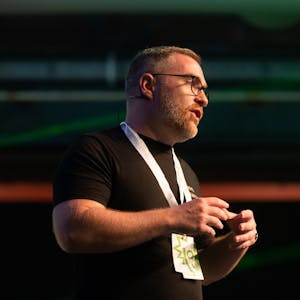Every day I feel like that when I'm not doing it. So, of course, we're here at React Summit. Gotta talk about React. Why do we love React? Well, because it's React. And we're all here, like, devs know React, so you're gonna be able to ramp up your team, add resources. That's one of the things we love about React.
It's always evolving but, yet, it's still stable. Okay. 18 had some changes that all shocked us, but, like, we were ready for that, right? Components make us architect our code in a good way. Dev tools, we love it. Vite. If you're not using Vite, use it. Go check it out. Yeah, if you're not doing it, just do it.
So, honorable mention. I'm running a little short on time, but honorable mention here is gonna be SSR. Like, we have to talk SSR a little bit. Now, what's awesome, if we're using Fastify and Vite, there's a little plugin for Fastify called Fastify Vite which lets us do SSR, so suddenly we have a full stack where we can do SSR and each component is modular going back to those principles. Works with all the major front-end libs. It's going to handle the page-level templeting and it's going to integrate all those routes that you probably have in your React router. It's going to add those into the Fastify server so we can map our client-side routes into routes on the server. I'm just going to go really quick here, if anyone wants to talk about this with me, we have a booth, a near-form booth out here, come see me and we can talk about that in more detail. It's customizable, it's not magic, it's super transparent. An honorable mention, my colleague Jonas Galvez, he just released Fastify DX which is going to have React and Fastify Vite all set up, out of the box, ready to go, check out this project, if you haven't, it's still kind of in beta. He just released it, I think, two weeks ago, and it's going to be out of the box, having everything set up but in a transparent way that you can customise.
So, when I started the talk, we're talking about unicorns and rainbows. Maybe we can't have both. If we start thinking about the problems that we're inevitably going to have in a production application, those non-functional requirements, and we build those into our tech stack from the beginning, we can still have unicorns. We may not have any rainbows, but I've still got a unicorn. So I just want to review this stack super quick.























Comments